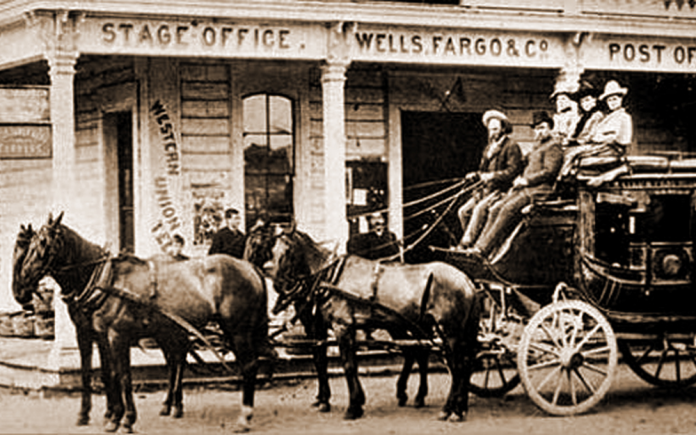
By Haddon Libby
With attendance estimated at 75,000, the Stagecoach Music Festival is one of the largest country music festivals each year. On the grassy lawns of the Empire Polo Club, the festival takes its name from an iconic image of the Old West. When most of us think of a stagecoach, the Wells Fargo Wagon typically comes to mind. The stagecoach linked western mining towns with more developed cities to the East.
These wheeled vehicles were pulled by horses in stages. At each stage, a fresh horse team would be used to continue the journey. Each day, a stagecoach could travel sixty to seventy miles. To put this in perspective, a trip from Palm Springs to Los Angeles would take two days compared to the two hours it can take today (traffic permitting).
The first stagecoaches occurred in 1610 in a route from Edinburgh, Scotland to Leith, Scotland. This method of transport was popular until the expansion of train routes in the 1800s.
As travel by stagecoach could take days, coaching inns began to pop up along the roads. William Shakespeare performed his first plays at a coaching inn – The George Inn located in Southwark, England. The George Inn was built in 1677 on the southern banks of the River Thames in London. The George is the last of the original coaching inns still standing in London.
As people moved west as part of the Gold Rush, Henry Wells and William Fargo opened the Wells Fargo stagecoach line in 1852 to shuttle people, supplies, and gold dust to and from the mining towns of California to all parts east. Wells and Fargo also helped to found American Express Company, now better known for its credit card.
Headquartered in San Francisco, Wells Fargo set up the precursor to its banking offices with its delivery routes. Seven years later, Wells Fargo Bank was established.
As mining increased, silver began the precious metal that needed to be shipped. Saddled with loads of silver and gold, these stagecoaches were the obvious targets of outlaw gangs. Despite stagecoaches being an easy target, Wells Fargo would guarantee delivery and insure shippers against losses. Shipments would be guarded by men riding shotgun.
In 1860, the precursor to the US Postal Service began. The Pony Express used eighty riders and 400 horses to deliver letters across the west. At its start, the Pony Express charged $5.00 for the delivery of a letter. Nearly two hundred Pony Express offices lined its delivery route. The most famous of its riders was William Cody aka Buffalo Bill. In one of his legendary rides, Buffalo Bill rode 322 miles over 22 hours while using 21 horses. Only eighteen months after its start, the Pony Express went bankrupt. The use of telegraph lines helped to undermine the high cost of running a delivery route.
By 1870, the use of stagecoaches was falling as train routes expanded.
Stagecoach Mary is known as the last stagecoach driver. The stuff of legends, Mary Fields was born as an orphaned slave raised by nuns. As an adult, this six-foot rifle-toting woman was known to smoke cigars, drink hard and fight. Mary became a stagecoach driver in 1895 at the age of sixty – a job she held until her retirement eight years later. As a result of her work and large personality, Stagecoach Mary’s was exempted from local legislation banning women from bars.
When you think of the Stagecoach Music Festival once it has passed, you can think of more than just the fine performances of the weekend. You now know some of the history of the iconic name that headlines the festival.
Haddon Libby is the Founder and Chief Investment Officer of Winslow Drake Investment Management. For more information, please visit www.WinslowDrake.com.










































